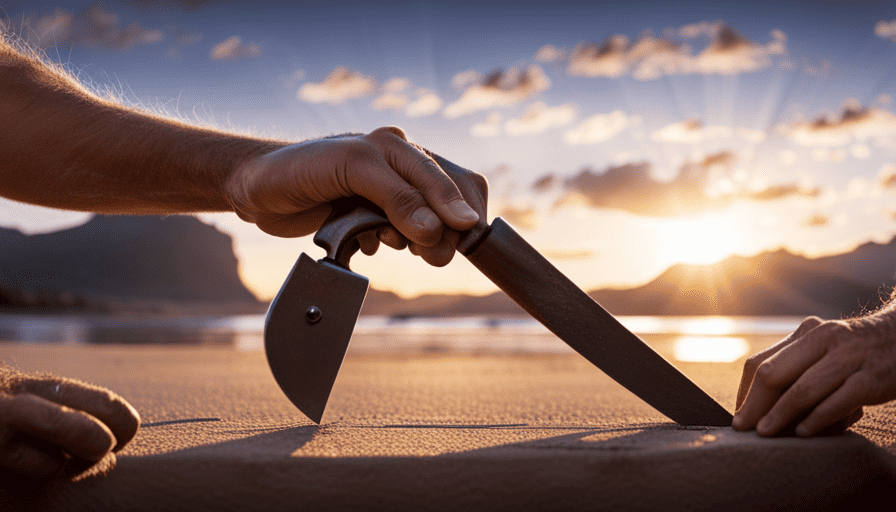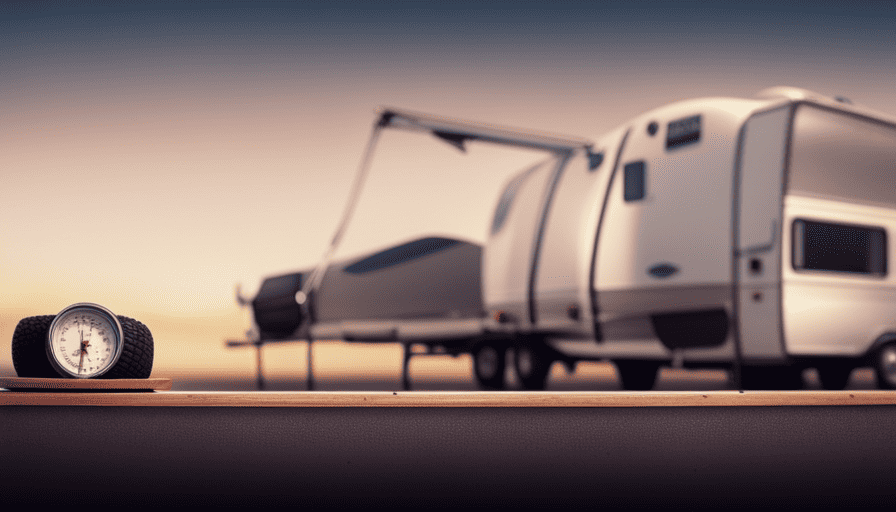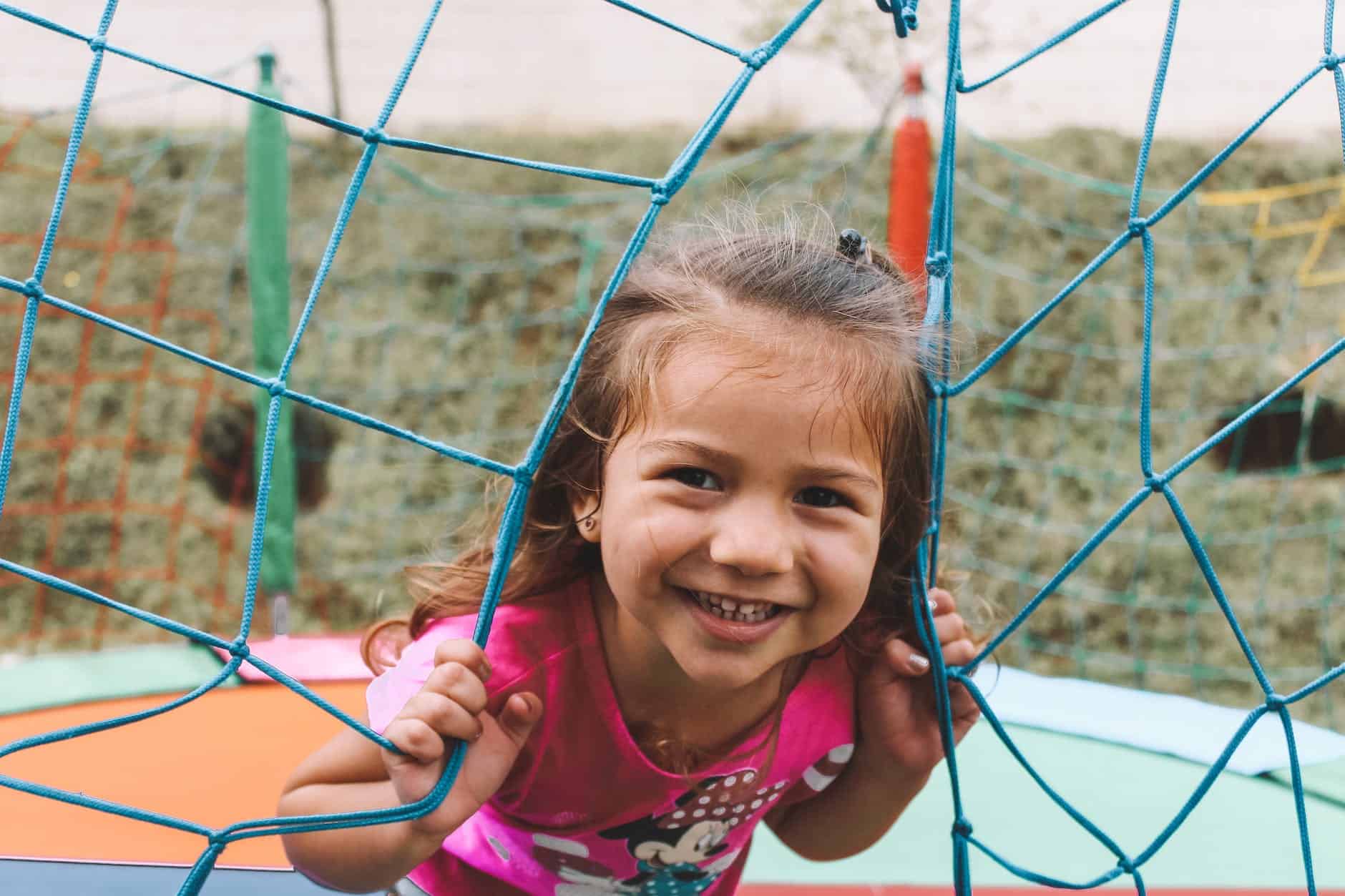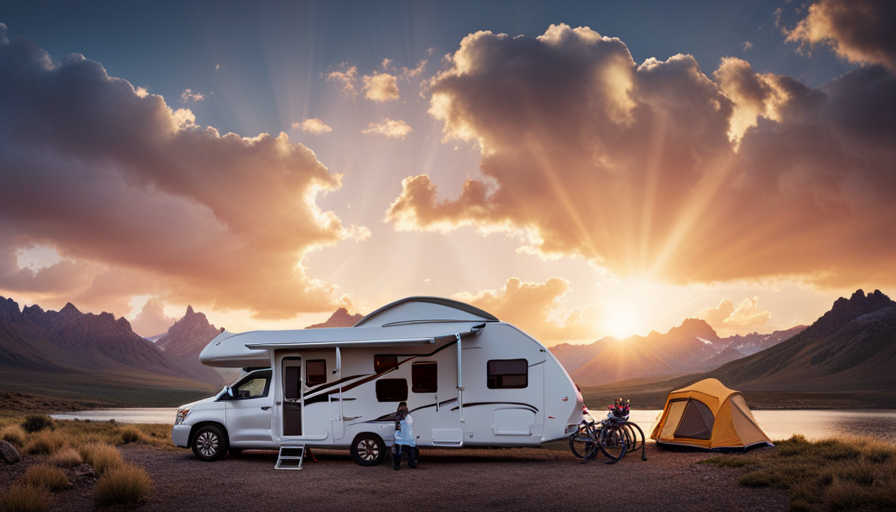Constructing a custom camper van is an engaging and satisfying endeavor that enables you to design a unique space for your road travels. Speaking from personal experience, I can vouch for the happiness and contentment derived from creating your own mobile home.
In this comprehensive guide, I will walk you through the step-by-step process of building your own camper. From determining your needs and budget to hitting the road in your finished creation, I will provide you with the knowledge and practical advice you need to successfully complete this project.
With a thorough understanding of your needs and a well-designed layout, you can start gathering the necessary materials and tools. Building the frame and structure is the foundation of your camper, followed by the installation of electrical and plumbing systems.
As you progress, you will learn how to install windows, doors, and roofing, as well as how to paint and finish the exterior.
By the end of this guide, you will be equipped with the skills and confidence to embark on your own camper-building adventure. So let’s get started and turn your dream of a DIY camper into a reality!
Key Takeaways
- Determine your needs and budget before starting the build.
- Choose durable and lightweight materials suitable for the intended use and climate.
- Plan the layout, considering the different areas needed and prioritize them.
- Use creative storage solutions and multi-functional furniture to maximize space.
Determine Your Needs and Budget
To successfully embark on your own camper build, it’s essential to first determine your specific needs and establish a realistic budget. This will ensure that you make informed decisions throughout the process and create a camper that meets your requirements.
Determining the size of your camper is the first step in this process. Consider how many people will be using the camper and what activities you plan on doing. If you’re planning on traveling with a family, you may need a larger camper with more sleeping space. On the other hand, if you’re a solo traveler or a couple, a smaller camper may be sufficient.
Choosing the right materials is also crucial. You want to select materials that are durable, lightweight, and suitable for the camper’s intended use. For example, if you plan on off-road adventures, you’ll need materials that can withstand rough terrain. Additionally, consider the climate you’ll be traveling in and choose materials that can handle the heat, cold, or humidity.
Once you have determined your needs and budget, you can move on to designing and planning your camper layout. This will involve considering the different areas you want in your camper, such as a kitchen, bathroom, and sleeping quarters.
Design and Plan Your Camper Layout
Crafting a cozy and functional home-on-wheels requires careful consideration and creative brainstorming for the perfect layout of your dream adventure sanctuary. When designing and planning your camper layout, there are several design considerations and space optimization techniques to keep in mind.
Firstly, think about how you will be using your camper. Do you need space for cooking, sleeping, and storage? Consider creating a two-column and five-row table to map out your needs and prioritize them. This visual representation can help you determine the best allocation of space for each activity.
In terms of design considerations, think about the flow of your camper. Plan for easy access to the essentials, such as the kitchen and bathroom. Additionally, consider the use of multipurpose furniture and storage solutions to maximize space. Foldable tables, hidden compartments, and vertical storage can all help you optimize the available area.
As you finalize your layout, keep in mind your budget and the materials and tools you will need to bring your design to life. With a well-thought-out plan and the right resources, you will be well on your way to creating your own camper. In the next section, we will discuss how to gather the materials and tools needed for your project.
Gather Materials and Tools
Now let’s gather all the materials and tools you’ll need to bring your dream adventure sanctuary to life. Gathering the right materials is crucial for a successful camper build.
For the structure, you’ll need plywood sheets, 2×4 lumber, and screws. Choose plywood with a thickness of at least ½ inch for durability. The 2×4 lumber will be used for framing and support. Opt for pressure-treated lumber to prevent rot and decay.
Additionally, you’ll need insulation material, such as foam board or fiberglass, to regulate the temperature inside the camper. For the interior, consider materials like vinyl flooring, laminate countertops, and cabinet-grade plywood for the walls.
Don’t forget to gather essential tools, such as a circular saw, drill, jigsaw, and measuring tape. These tools will help you cut the materials accurately and assemble the camper’s components.
With all the materials and tools in hand, you’re now ready to move on to the next step: building the frame and structure of your camper.
Build the Frame and Structure
Once you’ve gathered all the necessary materials and tools, it’s time to embark on the exciting journey of bringing your adventure sanctuary to life by constructing the frame and structure. Building your own camper requires careful planning and attention to detail. Here are three essential building techniques to consider when constructing the frame and structure:
-
Choose the right materials: When it comes to building the frame and structure of your camper, selecting the right materials is crucial. Opt for lightweight yet sturdy materials such as aluminum or steel for the frame. For the walls and roof, consider using materials like plywood or fiberglass to ensure durability and insulation.
-
Frame assembly: Start by laying out the floor plan and marking the positions for the walls. Use accurate measurements and precise cuts to create the frame. Secure the frame together using screws or bolts, ensuring a tight and stable structure.
-
Wall and roof installation: Once the frame is complete, it’s time to install the walls and roof. Attach the chosen materials to the frame using adhesive or screws, ensuring a seamless and secure fit.
By employing these building techniques and choosing the right materials, you can construct a strong and reliable camper frame and structure. With this foundation in place, you’re ready to move on to the next step of installing electrical and plumbing systems.
Install Electrical and Plumbing Systems
To ensure a functional and comfortable living space, you’ll need to install electrical and plumbing systems in your adventure sanctuary. When it comes to electrical safety, it’s crucial to prioritize the well-being of yourself and your fellow campers.
Begin by installing a breaker panel to regulate the flow of electricity and protect against overloads. Make sure to use proper wiring techniques and connect outlets, switches, and lights securely. It’s also important to ground your electrical system to minimize the risk of electric shock. Additionally, consider installing a battery system or solar panels to provide power when you’re off the grid.
As for plumbing maintenance, it’s essential to plan your layout carefully to maximize space and efficiency. Start by installing a freshwater tank and a water pump to provide a reliable water source. Connect the tank to a faucet, shower, and toilet using appropriate pipes and fittings. Consider using PEX tubing, as it’s flexible and resistant to freezing. To prevent leaks, use sealants and check for any signs of water damage regularly. Don’t forget to install a gray water tank or a composting toilet system to dispose of waste responsibly.
Now that you’ve tackled the electrical and plumbing systems, it’s time to move on to the next step of the process: constructing the interior and furnishings.
Construct the Interior and Furnishings
The interior and furnishings of your adventure sanctuary will serve as a reflection of your personal style and create a cozy and inviting atmosphere. When it comes to building your own camper, choosing the right insulation is crucial to ensure comfort and energy efficiency. There are various options available, such as foam board insulation or spray foam insulation, each with their own benefits and considerations.
Research and decide what works best for your needs and budget.
In addition to insulation, creative storage solutions are essential to make the most of the limited space in your camper. Utilize every nook and cranny by installing shelves, cabinets, and drawers that maximize storage capacity. Consider incorporating multi-functional furniture, such as a bed with built-in storage compartments or a dining table that can be folded away when not in use.
By carefully selecting the right insulation and implementing clever storage solutions, you can create an interior that is not only stylish but also functional.
These elements will help make your camper feel like a home away from home.
In the next section, we will discuss how to install windows, doors, and roofing, which are important steps in completing the construction of your camper.
Install Windows, Doors, and Roofing
Now that the interior of your camper’s starting to take shape, it’s time to move on to the next crucial step in the construction process: installing windows, doors, and roofing.
These elements not only add functionality and aesthetics to your camper but also play a vital role in ensuring your comfort and safety on the road.
When it comes to installing windows, there are various types and considerations to keep in mind. From fixed windows to sliding windows, each option offers its own advantages in terms of ventilation, insulation, and visibility. Carefully assess your needs and preferences before making a decision.
As for doors, security and accessibility should be your primary concerns. Opt for sturdy doors with reliable locking mechanisms to protect your camper from potential intruders, while also ensuring easy entry and exit.
In addition to windows and doors, don’t forget to pay attention to the roofing of your camper. A well-installed roof will prevent leaks and provide insulation against extreme weather conditions. Consider using durable materials that are lightweight yet sturdy, such as fiberglass or aluminum.
With the windows, doors, and roofing in place, your camper’s starting to come together. In the next section, we’ll explore how to paint and finish the exterior, giving your camper its final touch of personality and protection.
Paint and Finish the Exterior
Get ready to add your personal touch and protect the exterior of your camper by painting and finishing it to perfection. After installing windows, doors, and roofing, it’s time to weatherproof your camper and give it a fresh coat of paint.
Weatherproofing techniques are essential to ensure the longevity of your camper. Start by sealing any gaps or cracks using silicone caulk or weatherstripping to prevent water leaks. Next, apply a high-quality primer to create a smooth surface for the paint. This’ll also help the paint adhere better to the camper’s exterior.
When choosing the right paint color, consider both aesthetics and functionality. Opt for a color that reflects your personal style while also providing durability against the elements. Lighter colors can help to reflect heat and keep the interior cooler, while darker colors may absorb more heat.
Once you’ve chosen your paint color, apply two to three coats, allowing each coat to dry completely before applying the next. Finally, finish off by adding a clear coat to protect the paint from UV rays and other environmental factors.
Now that the exterior is complete, it’s time to test and inspect your camper for any potential issues before hitting the road.
Test and Inspect Your Camper
Before hitting the road, make sure to thoroughly test and inspect your camper to ensure a safe and worry-free journey. Testing your camper is crucial to identify any potential issues and address them before they become major problems.
Here are some effective test methods and an inspection checklist to help you in this process.
Firstly, test the electrical system by plugging in your camper to a power source and checking if all the lights, appliances, and outlets are functioning properly. Inspect the wiring for any signs of damage or wear.
Secondly, check the plumbing system by filling up the water tanks and running water through all faucets, toilets, and showers. Look for any leaks or unusual noises.
Lastly, conduct a thorough inspection of the exterior, including the roof, windows, and doors. Look for any signs of leaks, cracks, or loose fittings.
Remember to go through this inspection checklist before each trip to ensure your camper is in top-notch condition. Once you have completed the necessary tests and inspections, you can hit the road and enjoy your DIY camper! It’s time to embark on an exciting adventure knowing that your camper has been thoroughly tested and inspected for your safety and comfort.
Hit the Road and Enjoy Your DIY Camper!
Embark on an exciting adventure and hit the road with your DIY camper, ready to enjoy all the comforts of home while exploring the great outdoors! After all the hard work and dedication you’ve put into building your own camper, it’s time to reap the rewards.
But before you set off, it’s important to ensure you have all the camping essentials and knowledge for maintenance and repairs.
First and foremost, make sure you have all the necessary camping gear. Stock up on cooking utensils, bedding, and toiletries to make your camping experience comfortable. Don’t forget essentials like a first aid kit, insect repellent, and extra batteries for your devices. It’s also a good idea to have a toolbox with basic tools for any unforeseen repairs.
Regular maintenance is crucial to keep your DIY camper in top shape. Before each trip, check the tires, brakes, and lights to ensure they’re working properly. Keep an eye out for any leaks or damages and address them promptly. It’s also wise to have a maintenance schedule for routine tasks like checking the battery, cleaning the water tank, and inspecting the electrical system.
In case of any repairs, it’s helpful to have some basic knowledge and tools on hand. Learn how to troubleshoot common issues like a faulty electrical connection or a leaky faucet. Keep spare parts like fuses, light bulbs, and plumbing fittings in your toolbox.
With the right camping essentials and knowledge for maintenance and repairs, you can confidently hit the road and enjoy the freedom of your DIY camper. So get out there, explore new places, and create unforgettable memories in the comfort of your own creation!
Frequently Asked Questions
How do I choose the right size and type of camper for my needs?
Choosing the right size and type of camper requires careful consideration of your needs and preferences. Start by determining how many people will be using the camper and the amount of living and storage space required. Consider factors like the length and weight of the camper, as well as its layout and amenities.
Additionally, think about the type of camping you’ll be doing – whether it’s off-road adventures or campground stays – and choose a camper that suits your desired experience.
What are some common mistakes to avoid when designing and planning the layout of my camper?
When it comes to designing and planning the layout of your camper, it’s important to avoid common mistakes that can hinder your overall experience.
Did you know that 70% of DIY campers struggle with optimizing space in their designs? To avoid this, consider these tips: prioritize functionality over aesthetics, utilize multipurpose furniture, maximize storage options, and keep the layout open and flexible.
By following these guidelines, you can create a camper that’s both efficient and comfortable for your adventures.
Where can I find affordable and high-quality materials and tools for building my camper?
I’ve found that there are many affordable suppliers out there that offer high-quality materials and tools for building your own camper.
One option is to look for online suppliers that specialize in DIY camper kits. These kits often come with all the necessary materials and tools, making it easier and more cost-effective to build your own camper.
Additionally, you can also check out local hardware stores or home improvement stores, as they may offer affordable options for camper building supplies.
Are there any specific regulations or permits I need to be aware of when constructing a camper?
When it comes to constructing your own camper, it’s important to be aware of the regulations and permits that may come into play. These requirements vary depending on your location, but they often involve safety standards, electrical codes, and zoning restrictions.
Before diving into your project, it’s crucial to research and understand the specific regulations and permits that apply to your area. This will ensure that your camper meets all necessary requirements and can be enjoyed with peace of mind.
What are some essential safety precautions to take when installing electrical and plumbing systems in my camper?
When it comes to installing electrical and plumbing systems in your camper, it’s crucial to prioritize safety.
Electrical safety should include using proper wiring techniques, using GFCI outlets, and regularly inspecting and maintaining the system.
For plumbing precautions, ensure that all connections are secure, use appropriate materials for the plumbing lines, and regularly check for leaks.
It’s also important to have a fire extinguisher and carbon monoxide detector in your camper for added safety.
Are There Any Benefits to Building Your Own Camper?
Building your own camper can offer numerous benefits. Firstly, it allows you to customize every aspect according to your specific needs and preferences. Additionally, it can be a cost-effective alternative to buying a ready-made camper. Moreover, the sense of accomplishment and pride that comes with building your own camper is unmatched. Finally, you can embark on new adventures with the satisfaction of knowing that you created your own unique home on wheels.
Conclusion
In conclusion, building your own camper is a challenging but rewarding endeavor. By determining your needs and budget, designing a practical layout, and gathering the necessary materials and tools, you can create a personalized space that suits your adventurous spirit.
With attention to detail and thorough testing, your DIY camper will be ready to hit the road and provide endless joy and freedom. So seize the opportunity, embark on this journey, and let your dreams of a cozy and comfortable camper come to life!











